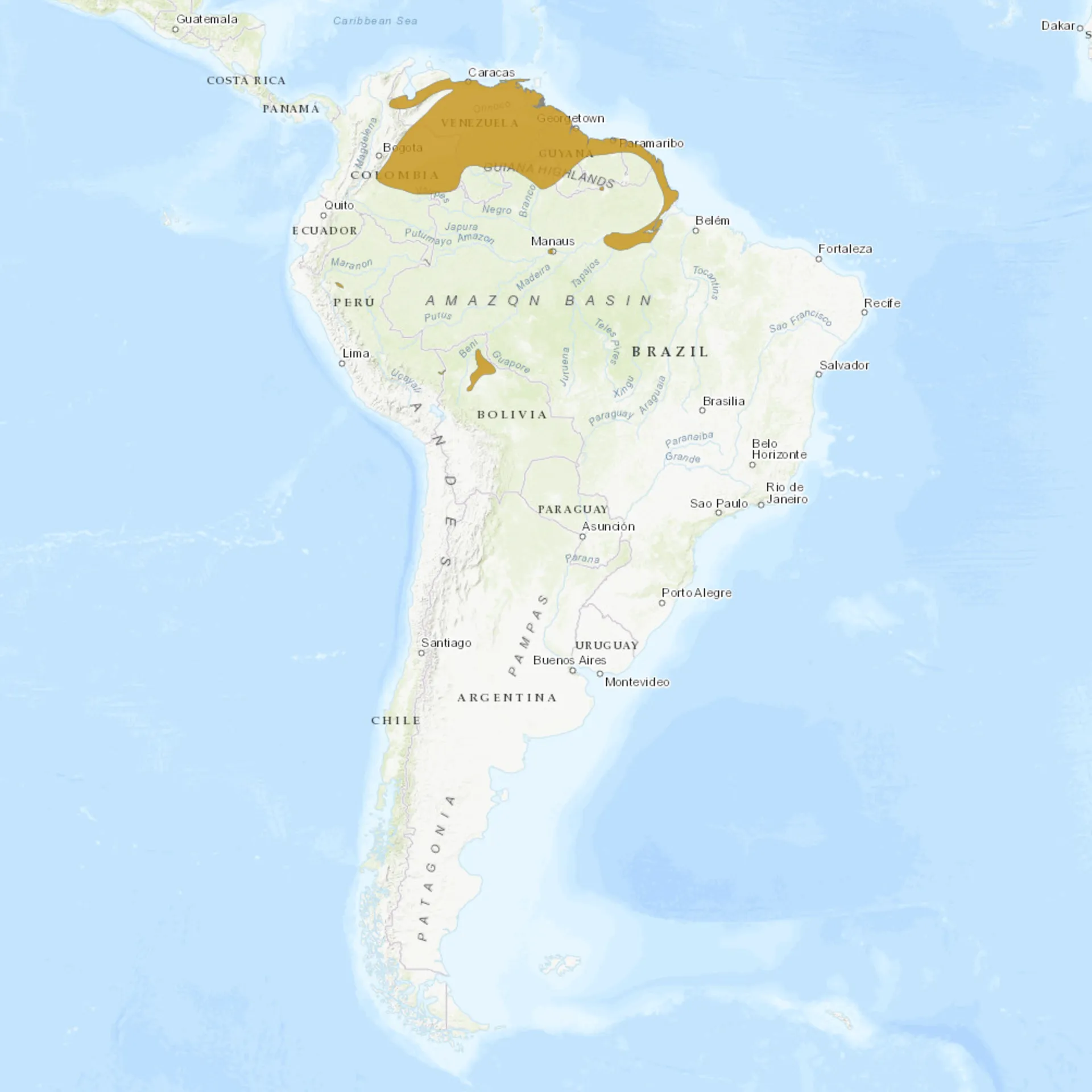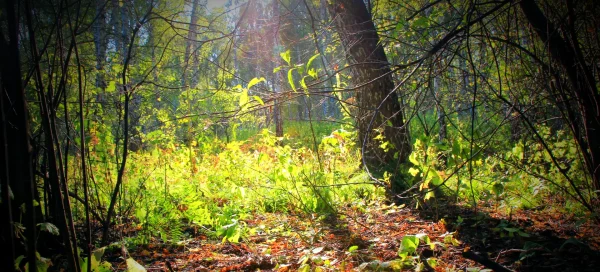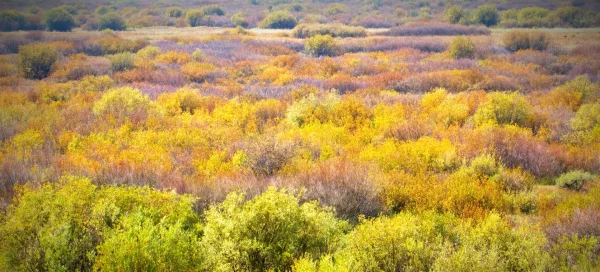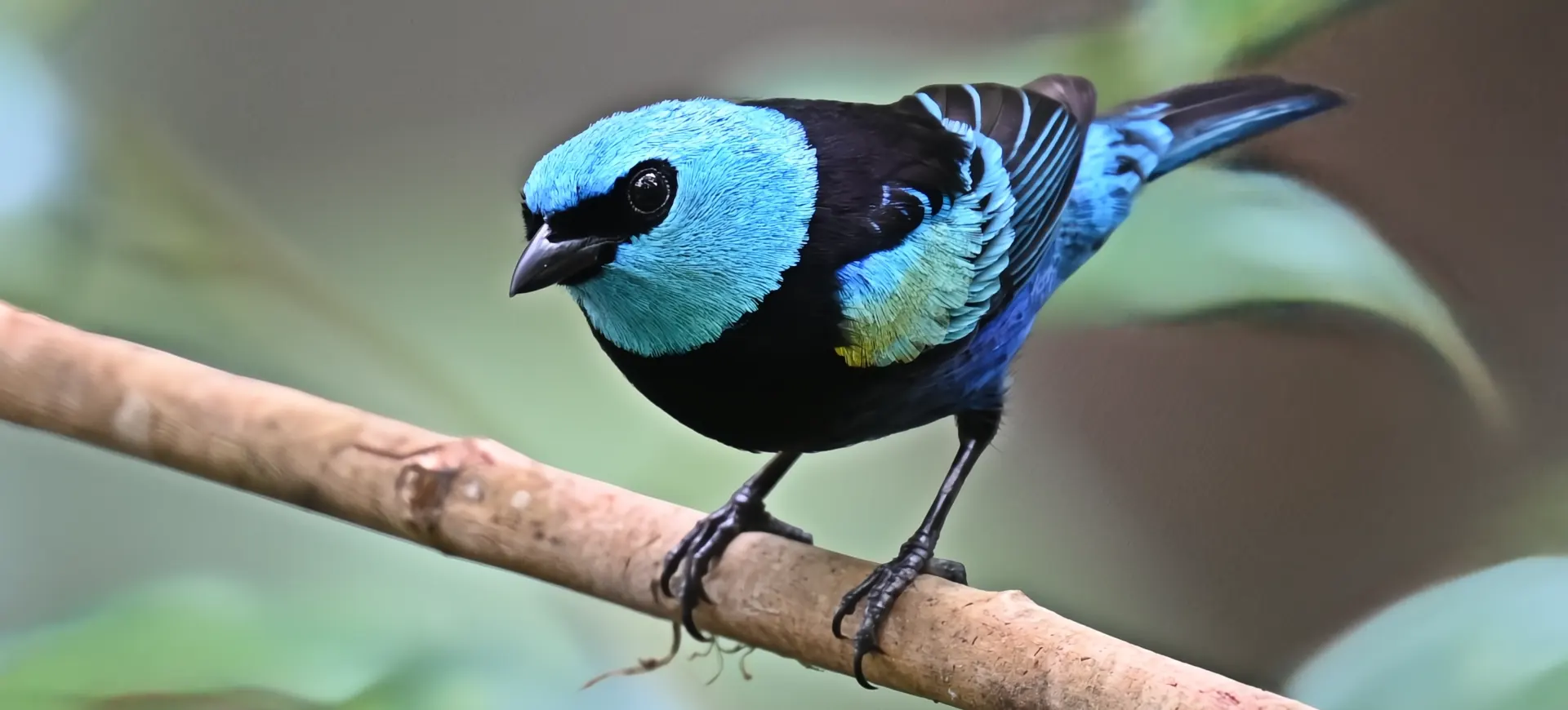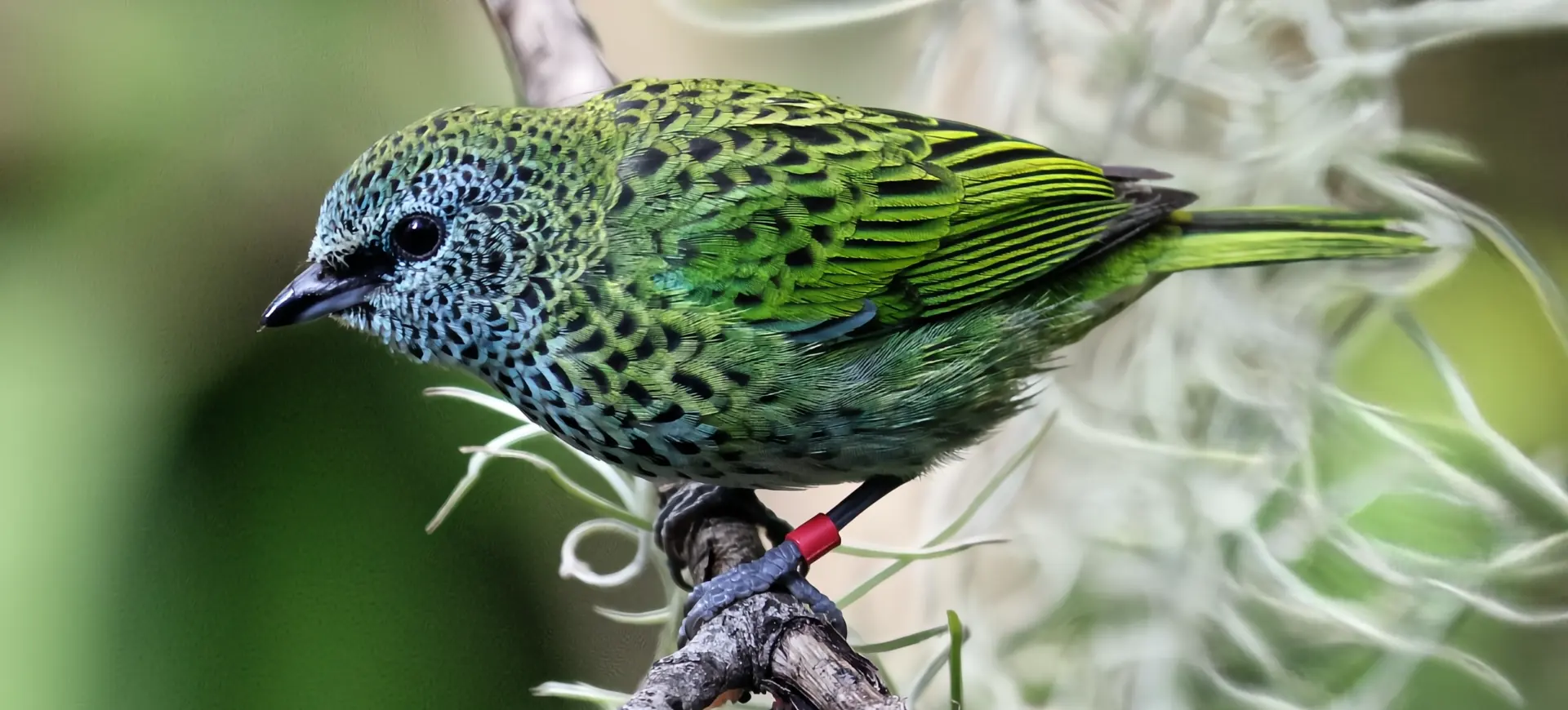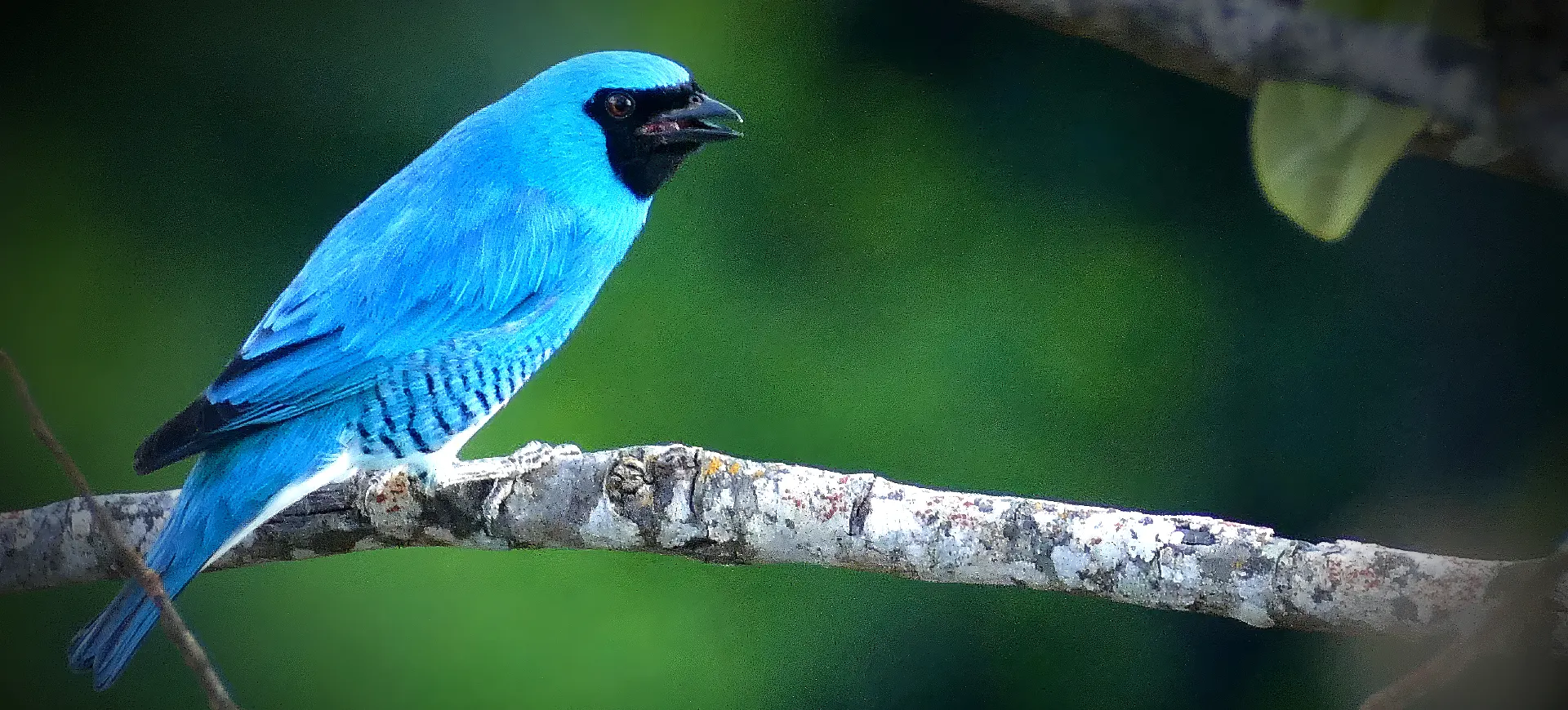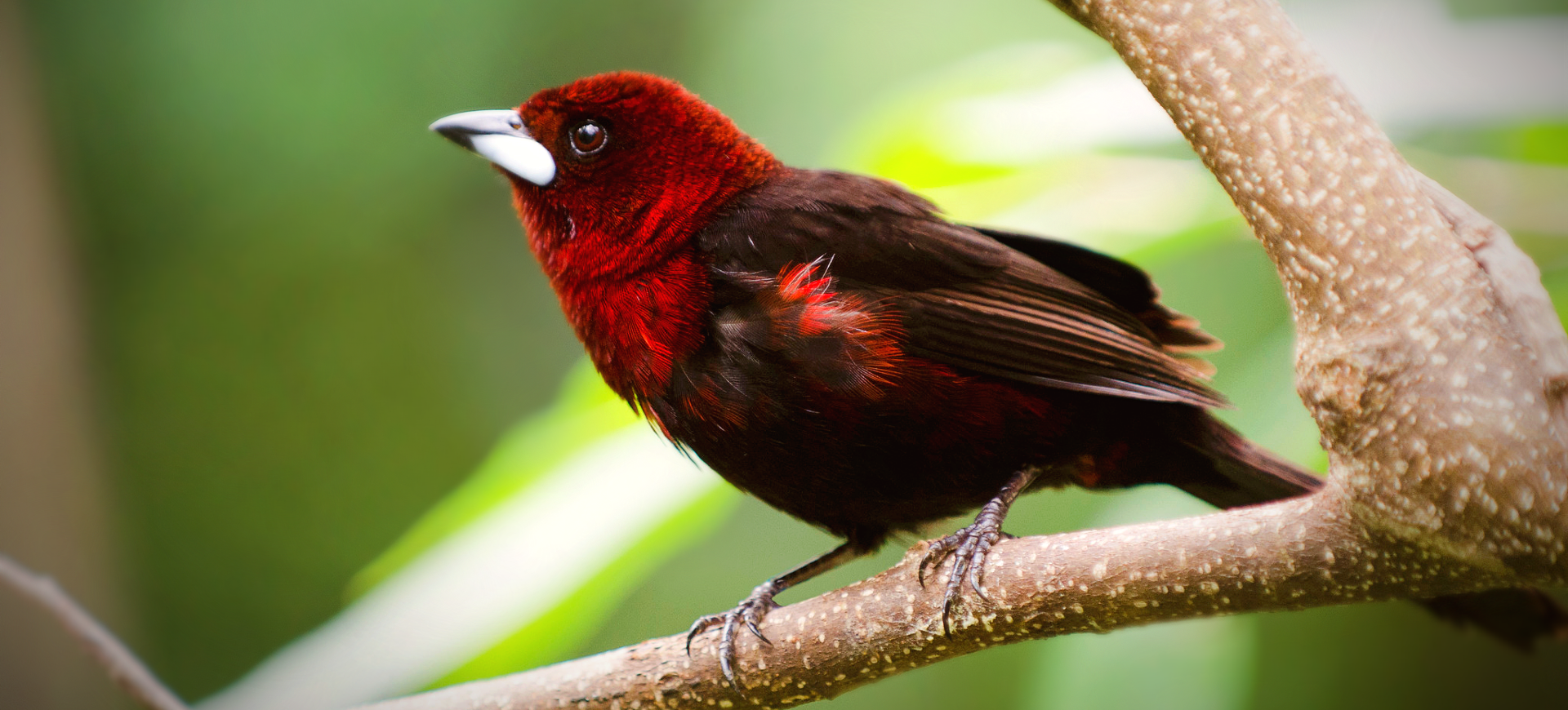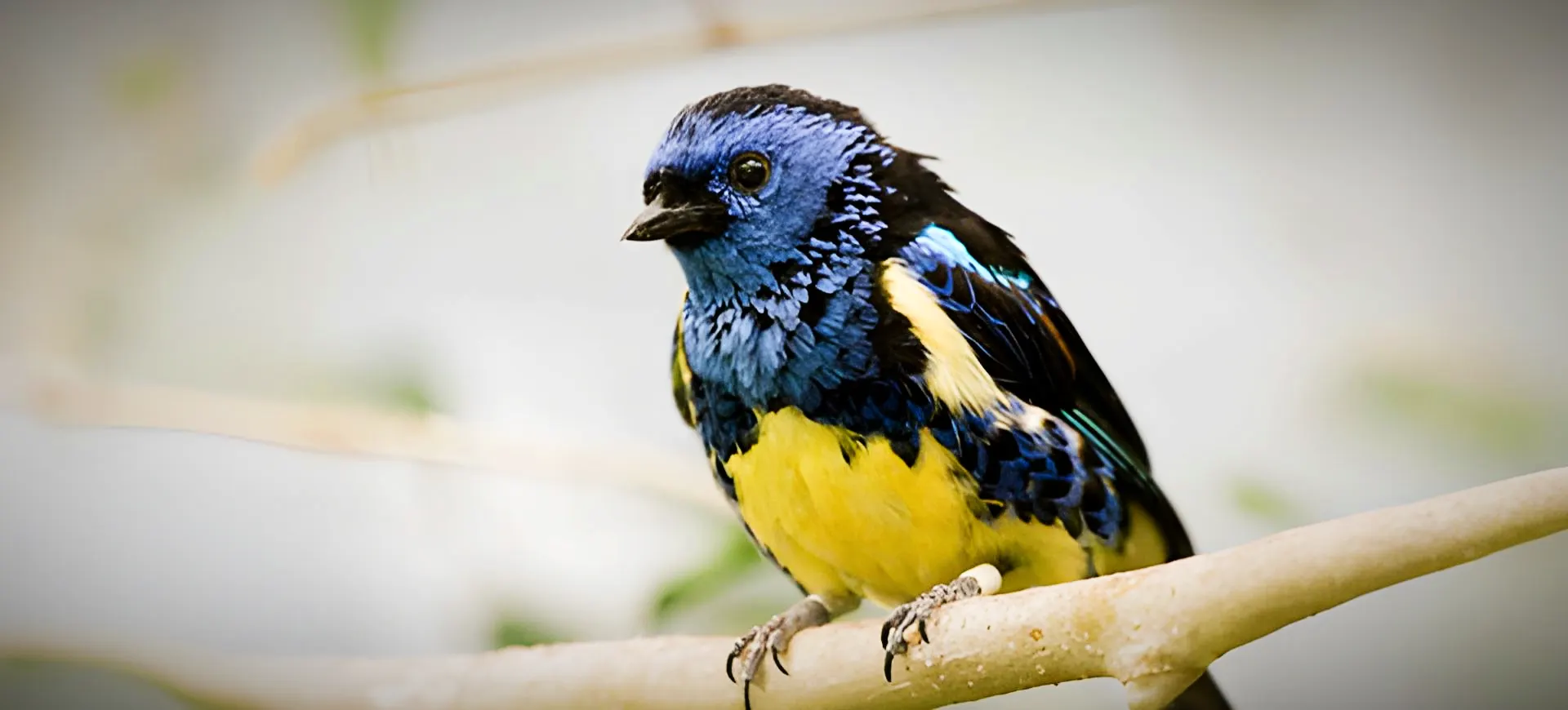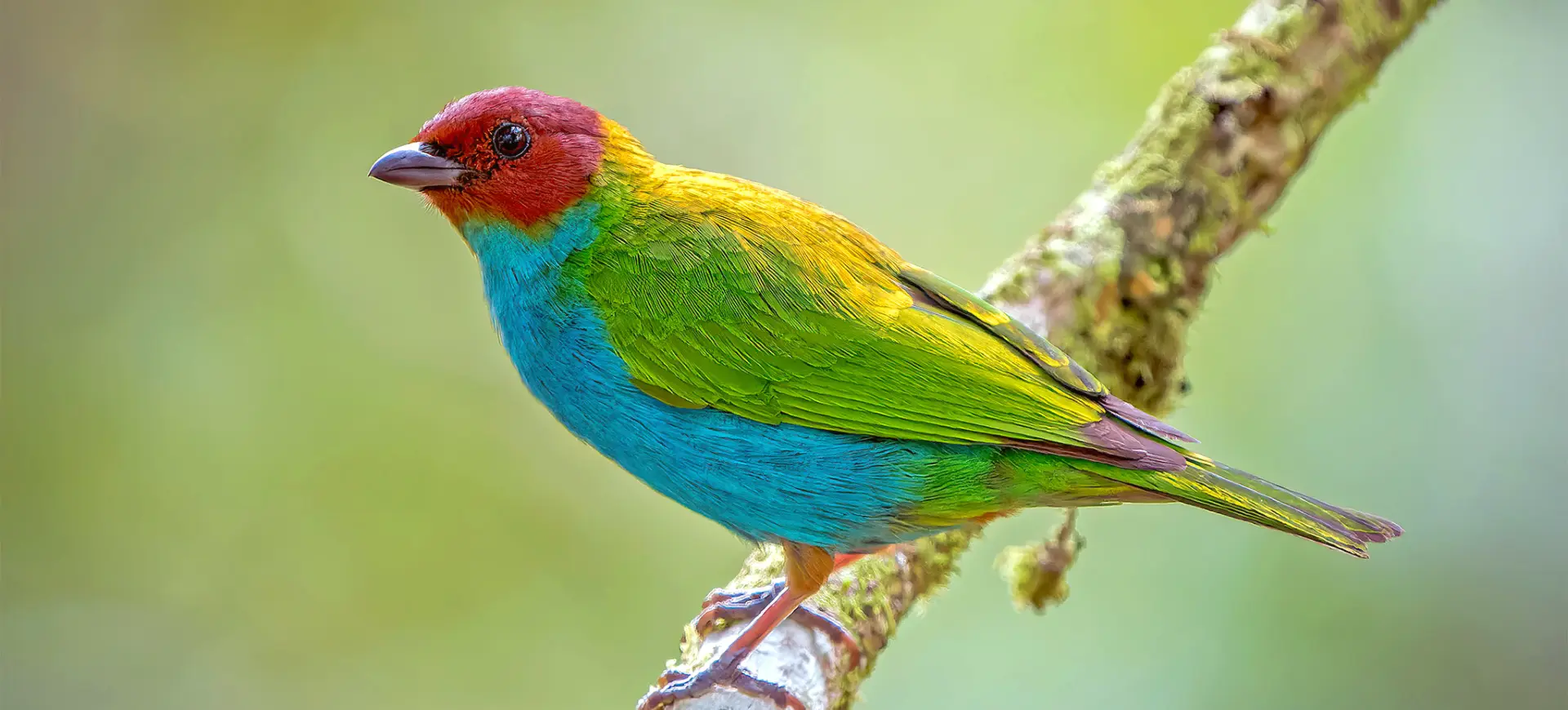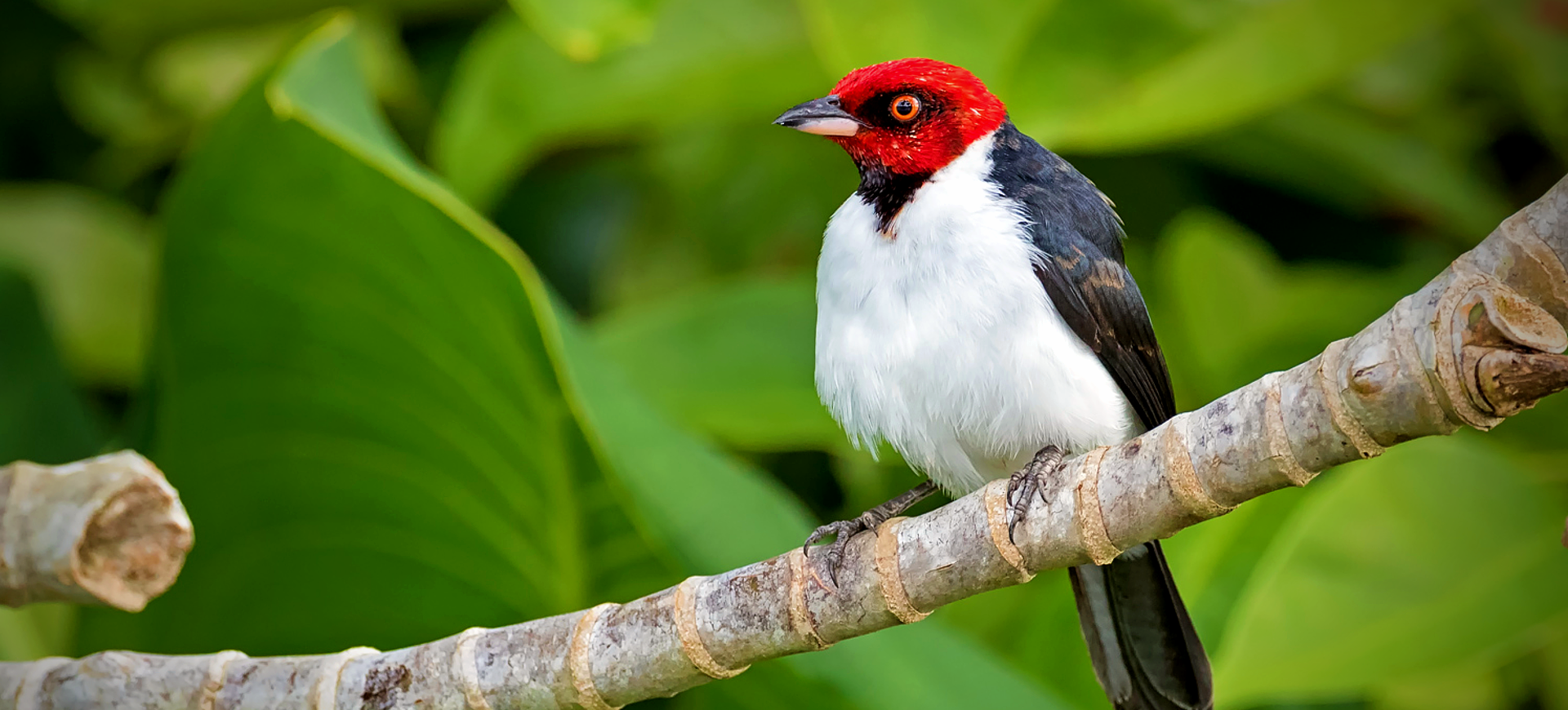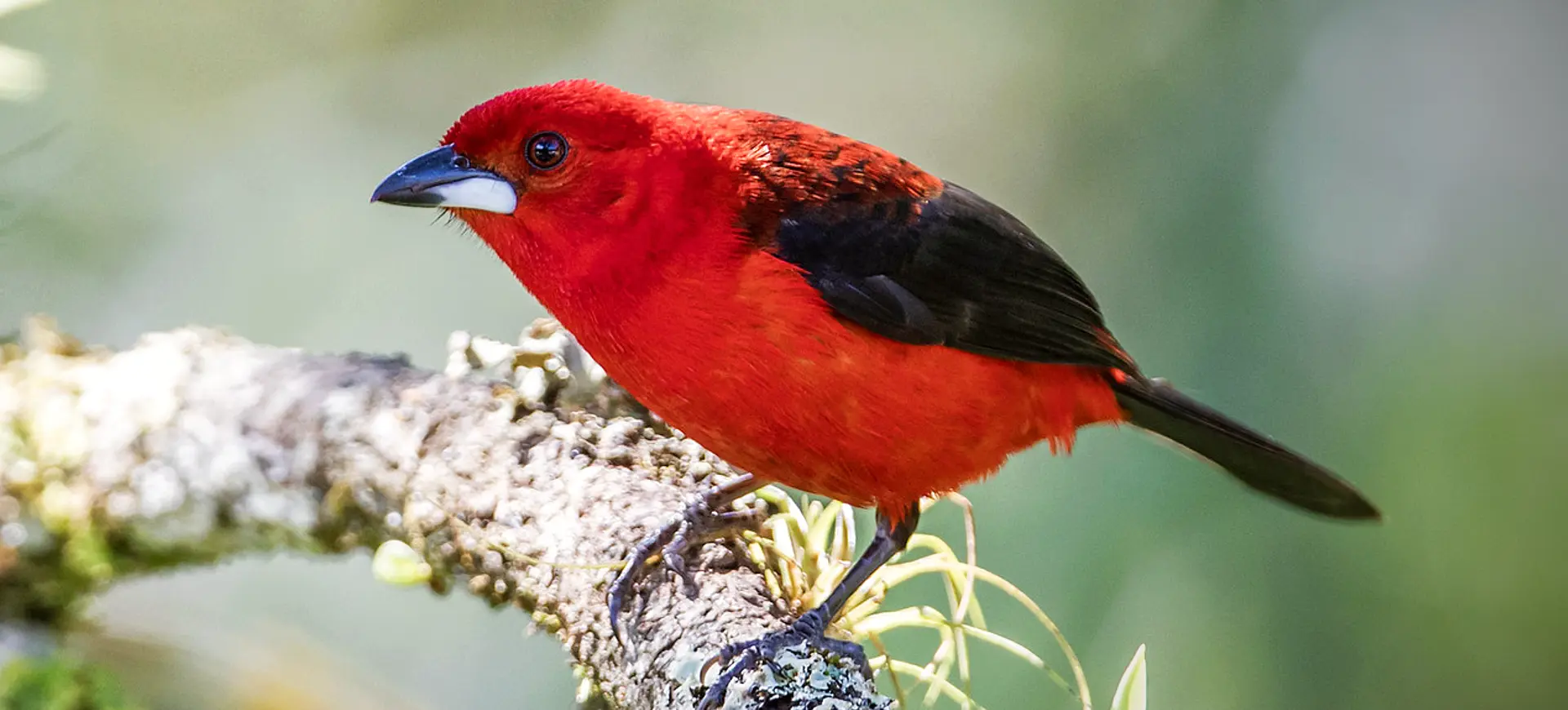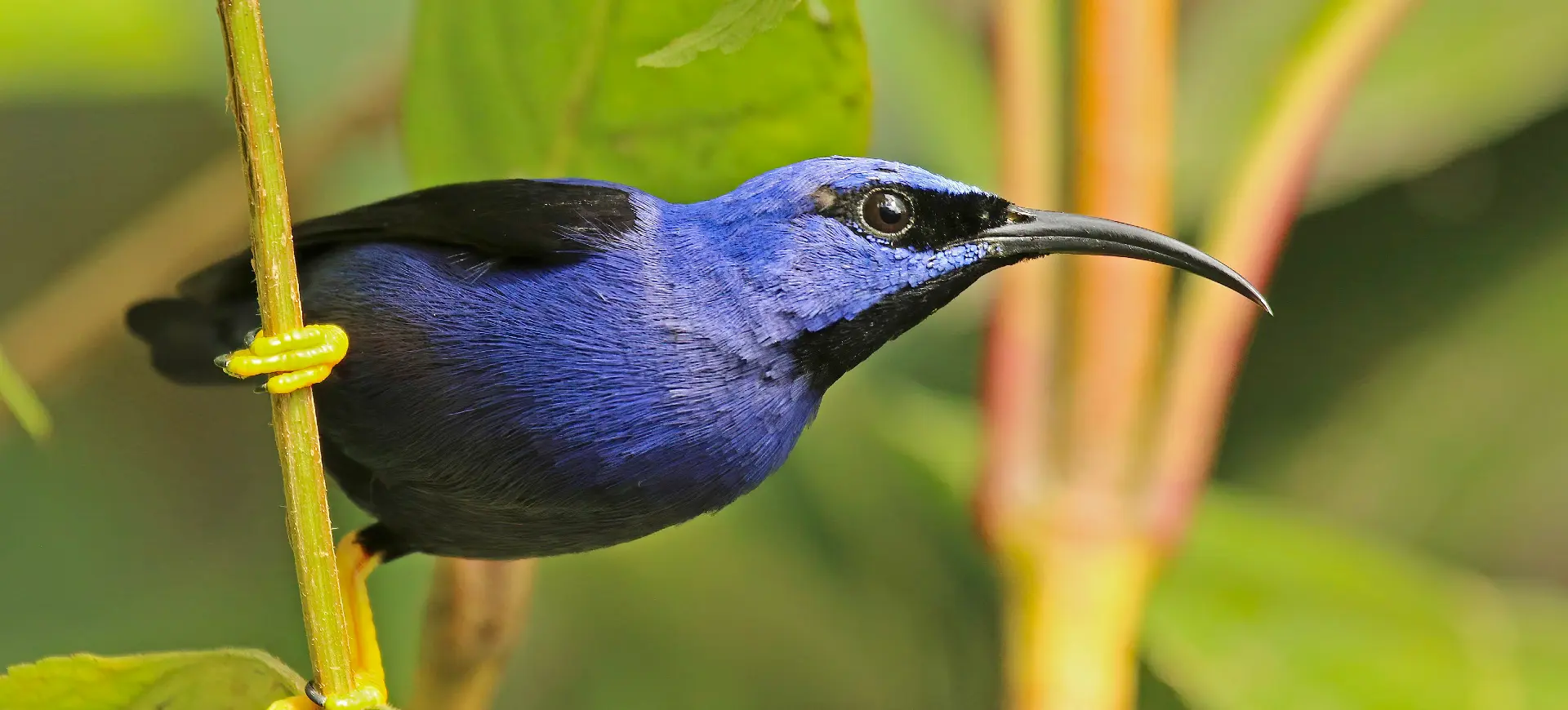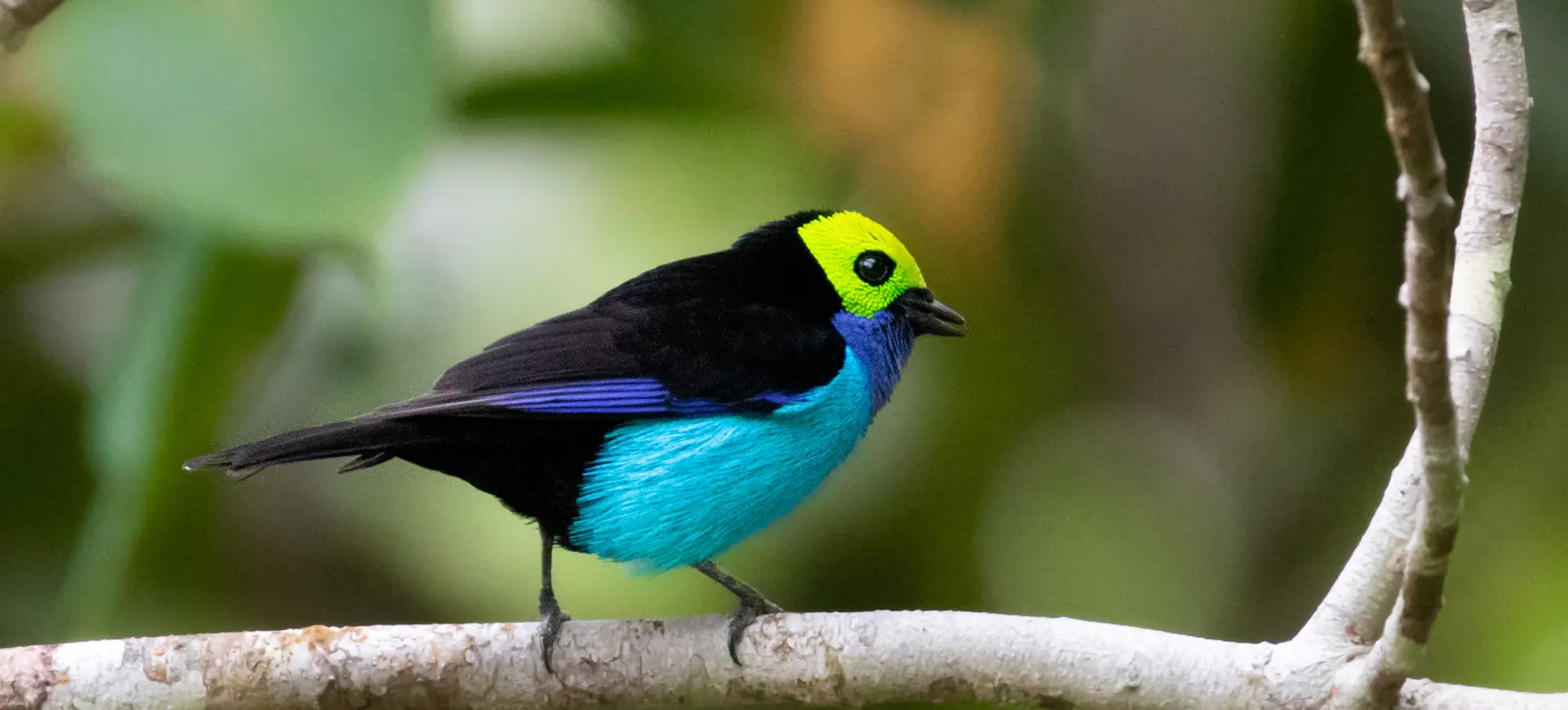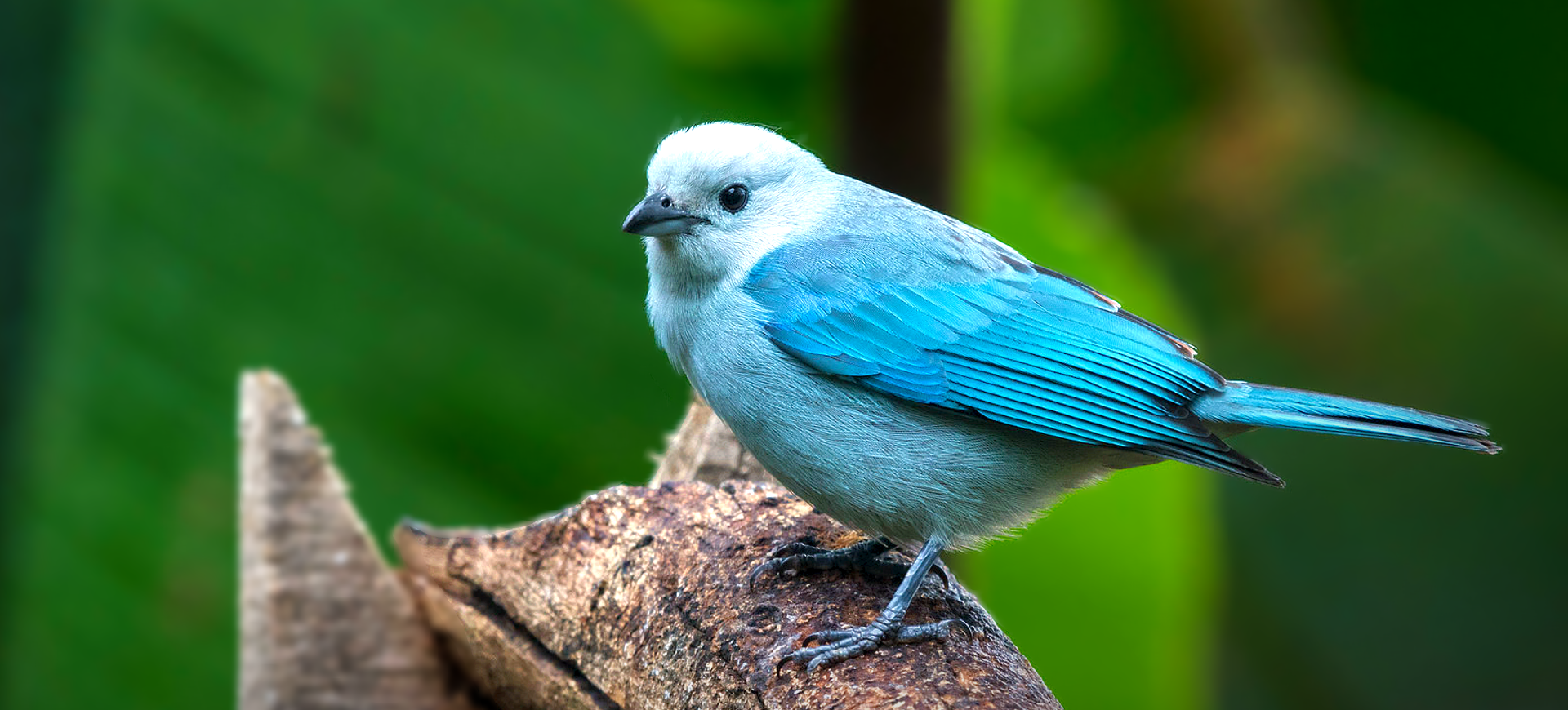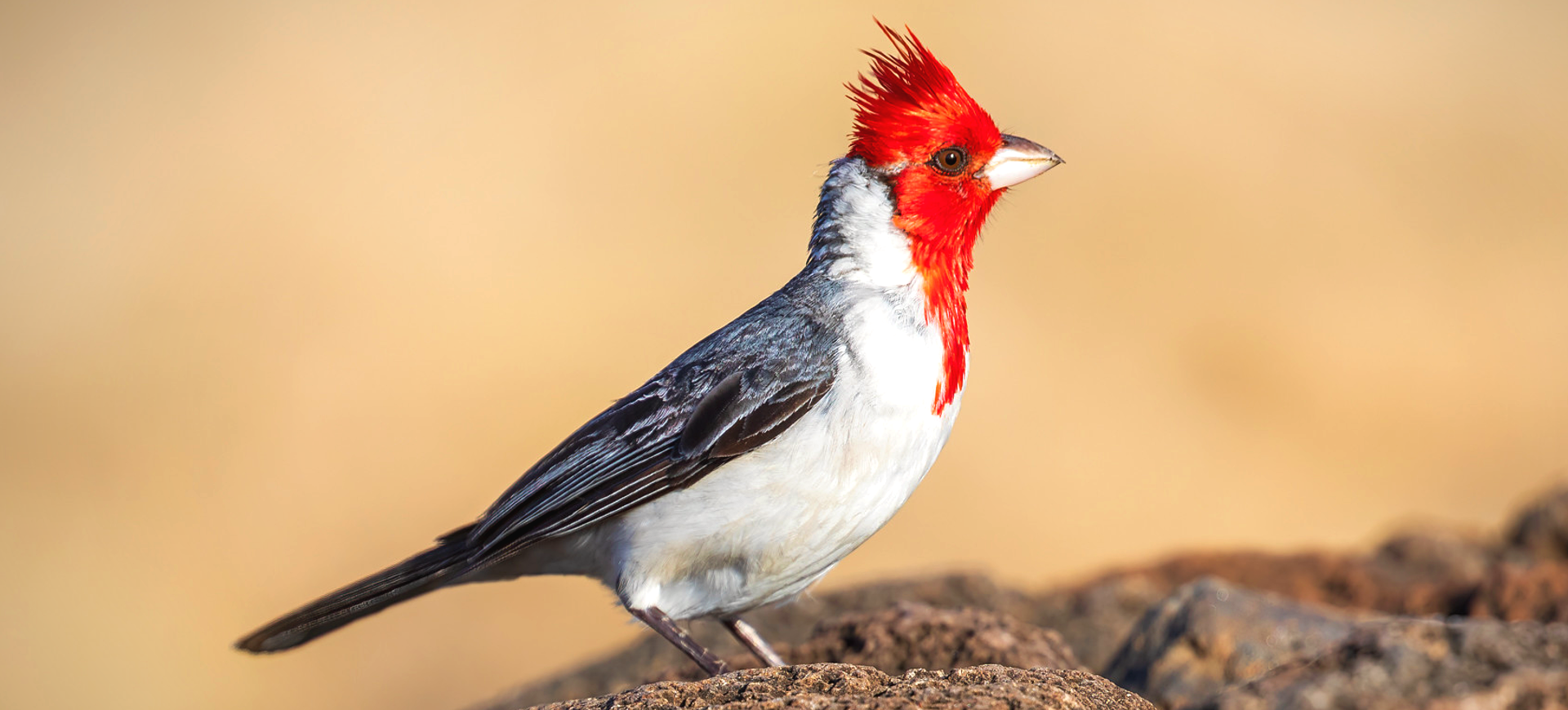Overview
The burnished-buff tanager (Stilpnia cayana) is a small, brightly colored songbird native to South America. It belongs to the Thraupidae family, which includes a diverse group of tanagers known for their vivid plumage and active foraging behavior. This species is named for its distinctive buff-colored underparts, contrasting with the iridescent blue and green hues on its head, back, and wings. It is commonly found in forest edges, open woodlands, and plantations, where it forages for fruit and insects.
Burnished-buff tanagers are social birds, often traveling in small groups or mixed-species flocks. Their active and agile nature allows them to easily navigate dense vegetation while searching for food. They communicate through various high-pitched calls, which they use to maintain contact with flock members. Although not considered migratory, they may move locally in response to food availability and seasonal changes.
This species has adapted well to human-altered landscapes and can frequently be found in orchards, gardens, and secondary forests. It plays an important ecological role as a seed disperser, helping to regenerate plant life in its habitat. While its population remains stable, habitat destruction poses a potential threat in some regions. Despite this, its adaptability to different environments has allowed it to remain widespread and relatively common across its range.
Taxonomy
Kingdom
Phylum
Class
Order
Family
Genus
Species
Type
Current distribution:
The burnished-buff tanager is widely distributed across northern and central South America, with populations in Colombia, Venezuela, Ecuador, Peru, Bolivia, Brazil, Guyana, Suriname, and French Guiana. It is most common in the Amazon Basin and surrounding lowland forests but extends into foothills and open woodlands. This species is non-migratory but may make local movements in search of food and breeding sites. It is frequently observed in natural and human-modified landscapes, making it a familiar species in some regions.
Despite ongoing deforestation in parts of its range, the burnished-buff tanager remains relatively abundant due to its adaptability. It has successfully colonized secondary forests, plantations, and urban green spaces, reducing its dependence on primary forests. However, habitat loss from large-scale agriculture and logging poses a long-term risk, particularly in regions with high deforestation rates. Conservation efforts focused on preserving forest edges and maintaining tree cover are important for ensuring its continued survival.
Physical Description:
The burnished buff tanager is a small, slender bird with striking plumage that varies slightly depending on the subspecies. Males typically display an iridescent blue-green head and upper body, contrasted by buff-colored underparts and darker wings. Females are generally duller, with a more subdued greenish or brownish coloration and less vibrant blue hues on the head. Both sexes have short, pointed beaks suited for consuming fruit and insects.
The bird’s wings and tail are predominantly dark, with subtle blue or green iridescence hints that catch the light. Its buff-colored belly and flanks contrast sharply with its more colorful upper parts, making it easily recognizable in its natural habitat. The eyes are dark and round, providing excellent vision for detecting food and avoiding predators. Its legs and feet are relatively small but strong, allowing it to cling to branches while feeding.

Lifespan: Wild: ~5 Years || Captivity: ~10 Years

Weight: Male: 0.74–1.13 oz (21–32 g) || Female: 0.67–1.06 oz (19–30 g)

Length: Male: 4.7–5.5 in (12–14 cm) || Female: 4.3–5.1 in (11–13 cm)

Wingspan: Male & Female: 7.1–8.3 in (18–21 cm)

Top Speed: Unknown
Characteristic:
Native Habitat:
The burnished-buff tanager inhabits many forested and semi-open environments across South America. It is commonly found in lowland and foothill forests, preferring forest edges, secondary growth, and clearings. Unlike some tanager species that rely on dense primary forests, this bird thrives in disturbed habitats and cultivated areas. Its adaptability allows it to persist in areas with fragmented tree cover as long as food sources remain available.
It is often seen in orchards, plantations, and gardens, where fruiting trees provide a steady food supply. While most common at lower elevations, it can be found up to 6,600 feet (2,000 meters) in some regions. It prefers humid and semi-humid environments but can also be found in drier woodlands and savanna-like habitats. The presence of flowering plants and fruit-bearing trees is a key factor in determining its local distribution.
Climate Zones:
Biogeographical Realms:
Continents:
Diet:
Diet & Feeding Habits:
The burnished-buff tanager is an omnivorous bird primarily consuming fruits, nectar, and insects. It plays a key role in seed dispersal by feeding on various berries and soft fruits, excreting seeds that contribute to forest regeneration. Insects, including beetles, caterpillars, and ants, provide an important source of protein, particularly during the breeding season. It often forages by hopping between branches, plucking food directly from leaves or catching flying insects in mid-air.
This species frequently joins mixed-species foraging flocks, benefiting from increased protection and food discovery. It is especially attracted to fruiting trees and flowering plants, where it can access both fruit and nectar. While it prefers native fruits, it readily consumes cultivated varieties in orchards and gardens. Its ability to exploit multiple food sources allows it to thrive in natural and human-altered landscapes.
Mating Behavior:
Mating Description:
Burnished-buff tanagers are monogamous, with pairs forming strong bonds during the breeding season. Males engage in courtship displays that include singing, fluttering, and offering food to the female as a sign of commitment. Once paired, both parents participate in nest-building, which involves weaving a small cup-shaped structure from plant fibers and moss. The nest is typically placed in the dense foliage of a tree or shrub, protecting it from predators.
The female lays 2–3 eggs, which she incubates for about two weeks while the male provides food. After hatching, both parents feed the chicks, bringing them small fruits and insects. The young fledge within 15–20 days but may remain near their parents briefly before becoming fully independent. Breeding is often timed with periods of high fruit availability to ensure sufficient food for growing chicks.
Reproduction Season:
Birth Type:
Pregnancy Duration:
Female Name:
Male Name:
Baby Name:
Social Structure Description:
The Burnished-Buff Tanager displays a dynamic social structure, shifting with seasonal changes. In the breeding season, they primarily engage in monogamous relationships, dedicating themselves to nest construction, egg incubation, and nurturing their offspring. This period is characterized by strong pair bonding and a shared commitment to parental responsibilities, underscoring the importance of cooperation in raising their young. The breeding season underscores their dedication to family, with both parents actively participating in the growth and protection of their chicks.
Outside the breeding season, burnished buff Tanagers adopt a more communal lifestyle, often forming small flocks for foraging. This tendency to aggregate is especially pronounced when searching for food, and they frequently join mixed-species flocks, a common behavior among various tanager species. Such social foraging improves their efficiency in finding food and enhances vigilance against potential predators. The ability of Burnished-Buff Tanagers to modify their social behavior based on environmental cues and seasonal shifts is a testament to their adaptability and social intelligence, which are crucial for their survival and success as a species.
Groups:
Conservation Status:
Population Trend:
The burnished buff Tanager population is considered stable and widespread across its natural range. They are a common species within suitable habitats, indicating a healthy population status. The species’ adaptability to various forested and semi-forested habitats, including those altered by human activity, contributes to its resilience.
During the breeding season, these tanagers are typically found in pairs, focusing on raising their young. Outside the breeding season, they may form small flocks, often seen foraging together. Their ability to utilize a variety of fruiting plants and adapt to different environments has helped maintain stable population numbers despite habitat changes in some regions.
Population Threats:
The primary threats to the Burnished-Buff Tanager include habitat loss and fragmentation due to deforestation and agricultural expansion. In some areas, their habitats are being converted into agricultural land, reducing the availability of suitable nesting and foraging sites. However, their adaptability to modified habitats like gardens and orchards has helped mitigate the impact of these threats.
Climate change could alter their habitats, affecting food availability and breeding success. Despite these challenges, the species’ wide distribution and generalist feeding habits have enabled them to maintain stable populations. Ongoing conservation efforts focusing on habitat preservation and sustainable land use are essential for their continued well-being.
Conservation Efforts:
Conservation efforts for the Burnished-Buff Tanager primarily focus on habitat conservation and management. Protecting and preserving tropical and subtropical forests is crucial for maintaining healthy populations of this species. Efforts include establishing protected areas, promoting sustainable forestry practices, and restoring degraded habitats.
Educational programs and community involvement are also important in conserving this species. Raising awareness about the importance of forest ecosystems and the role of species like the burnished buff Tanager in seed dispersal and ecosystem health can help garner support for conservation initiatives. Research on their ecology, breeding habits, and population dynamics is essential for informed conservation strategies and habitat management.
Additional Resources:
Fun Facts
- The Burnished-Buff Tanager’s bright plumage is not just for show; it plays a crucial role in courtship and social interactions.
- These birds have a unique, warbling song often heard during the breeding season and is used to attract mates and communicate with other tanagers.
- Despite their small size, Burnished-buff Tanagers are known for their boldness, often approaching bird feeders closely in gardens and parks.
- They are capable of rapid, agile flight, which they use to dart through foliage in search of food or to escape predators.
- In addition to fruits and insects, these tanagers have been known to occasionally feed on nectar, displaying their versatile feeding habits.
- The female burnished buff Tanager plays a significant role in nest building, carefully constructing the nest with twigs, leaves, and other plant materials.
- Young tanagers learn to forage by observing and mimicking their parents’ behavior, highlighting the importance of parental care in their development.
- The burnished buff Tanager is an important species for birdwatching tourism in many parts of South America, attracting enthusiasts with its vibrant colors and melodious song.
- These tanagers are not just visually appealing; they play a vital ecological role in their habitats as seed dispersers and controllers of insect populations.
- The adaptability of the Burnished-Buff Tanager to different habitats, including urban areas, demonstrates their resilience and capacity to coexist with human-altered environments.


